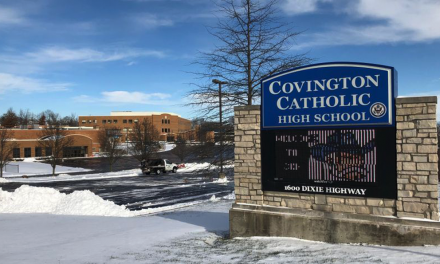Alexis LIghtcap was in junior high when she went to use the girls’ restroom and found a boy there. She writes, “My first thought was to get out. My second was to find my teacher and let her know what had happened. The teacher told me to tell the principal, so I did. And the principal did nothing.”
Lightcap is one of the students now represented by Alliance Defending Freedom (ADF) in a case that asks this question: Does a school district have a compelling interest in forcing high school students to share restrooms, locker rooms and shower facilities with members of the opposite sex? That’s the issue surrounding an appeal filed with the U.S. Supreme Court in the case of Doe v. Boyertown Area School District.
The answer for most parents and students and courts should be a resounding “NO.” But does the equation change when you learn those opposite sex students claim a “gender identity” that is different than their biological sex?
Lightcap explains in this video how her high school secretly changed its policy to allow gender-confused students to use the restrooms and locker rooms of their choice. She found out about the new policy (and was traumatized) only when she encountered the boy in the girls’ restroom. Some male students only found out about the new policy when they realized a female was changing clothes along with them in the boys’ locker room. The school administration ignored all their concerns, and objections voiced by parents.
The school district offered concerned students only one alternative: Stop using the restroom or locker room that is designated for your sex, if you don’t want to see someone of the opposite sex in them. But that “choice” effectively denies them the use of any of the school’s private facilities, and likely violates Title IX , the federal law that protects against discrimination in schools on the basis of sex.
And why should a group of students be denied the use of the designated sex-specific private areas in the school in order to facilitate the gender confusion of one student? Randall Wenger, one of the attorneys representing the parents and students who are suing the district, explains the problem: “Schools should not expect students to accept that the differences between females and males don’t matter in the very places set apart for privacy from the opposite sex.”
The students and parents who filed the original case have fought an uphill battle. They lost at both the federal district court and the Third U.S. Circuit Court of Appeals. They’ve now asked the Supreme Court to reverse those lower court decisions and hold that students have a right to bodily privacy under the U.S. Constitution, as well as rights under Title IX, that are infringed when sex-segregated facilities on campus are opened up to transgender-identified students.
The case has not yet been accepted by the Supreme Court. We’re praying that Alexis Lightcap – and other students who care about privacy and safety – will prevail.






